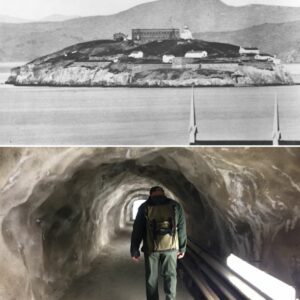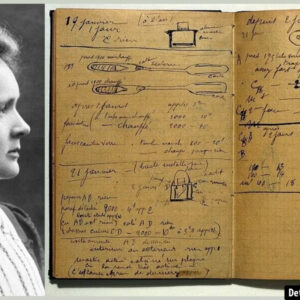In 1972, when astronaut Charles Duke became the youngest person to walk on the Moon during the Apollo 16 mission, he made history not only with his scientific contributions but with a deeply personal gesture. A family portrait, left on the Moon’s surface, has now become one of the most heartwarming symbols of human connection to space. For over 50 years, this photograph of Duke, his wife, and their two sons has remained on the lunar surface, untouched and preserved. In this article, we explore the significance of that family photo, the Apollo 16 mission, and the enduring legacy that Charles Duke has left behind on the Moon.
Introduction: A Family Portrait on the Moon
Charles Duke’s historic journey to the Moon wasn’t just about making scientific strides or gathering lunar samples; it was about leaving behind a part of himself and his family for future generations. The family photo that Duke placed on the Moon stands as a reminder of the human side of space exploration. As the Apollo 16 Lunar Module Pilot, Duke’s actions on the Moon went beyond technical achievements—he also symbolically carried the love and memories of his family into space.
But what was the story behind this family portrait, and why did Duke choose to leave it behind? It was, in part, a simple yet profound act of personal significance. On April 20, 1972, while exploring the Descartes Highlands with fellow astronaut John Young, Duke took a moment to place a photograph of his family on the lunar surface. On the back, he wrote a heartfelt message: “This is the family of astronaut Duke from planet Earth who landed on the Moon on April 20, 1972.” This touching gesture would etch the Duke family into the fabric of space history.
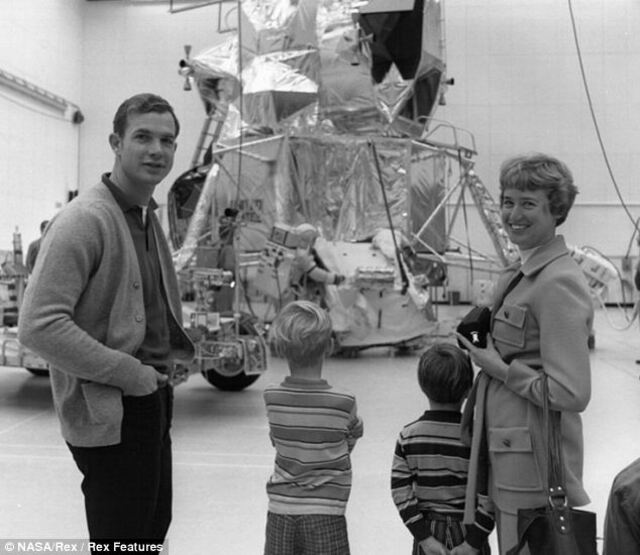
Video
https://www.youtube.com/watch?v=MU0Rgpdujzo&pp=ygUtQSBGYW1pbHnigJlzIExlZ2FjeSBvbiB0aGUgTW9vbjogQ2hhcmxlcyBEdWtl
The Apollo 16 Mission: A Historical Overview
Apollo 16 was the tenth manned mission of NASA’s Apollo program and marked the fifth successful landing on the Moon. Led by Commander John Young, the mission included Lunar Module Pilot Charles Duke and Command Module Pilot Ken Mattingly. Their goal was to explore the Moon’s Descartes Highlands, a region that had not been studied during previous missions.
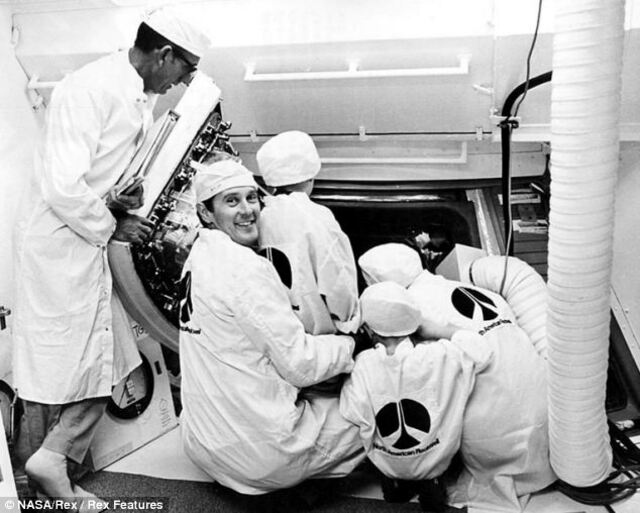
The mission launched on April 16, 1972, from the Kennedy Space Center in Florida and lasted 11 days, 1 hour, and 51 minutes. One of Apollo 16’s most significant achievements was the use of the Lunar Roving Vehicle (LRV), which allowed the astronauts to travel a record-breaking distance of 26.7 kilometers across the lunar surface. This made Apollo 16 the first mission to fully explore a wide area of the Moon beyond the immediate vicinity of the Lunar Module.
As Duke and Young explored the Moon, they collected lunar samples that later disproved the theory that the Descartes Highlands were volcanic in origin. Their observations helped scientists gain a clearer understanding of the Moon’s geological history.
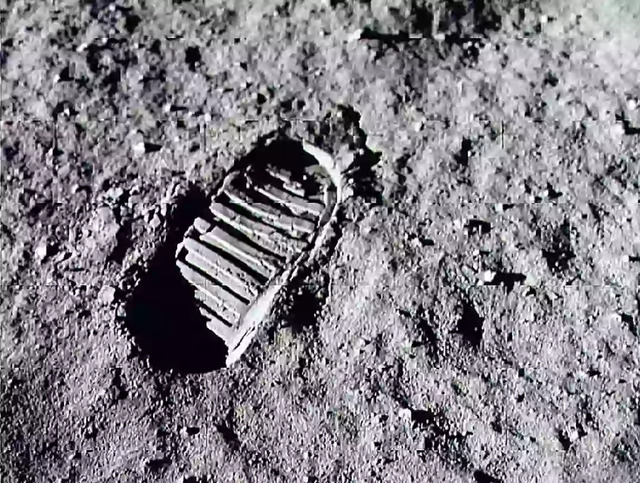
Charles Duke’s Historic Moonwalk
At just 36 years old, Charles Duke became the youngest person to walk on the Moon—a title he still holds today. His excitement was palpable when he first set foot on the lunar surface. He famously exclaimed, “Fantastic! Oh, that first foot on the lunar surface is super!” Duke’s enthusiasm for space exploration was evident in every step he took on the Moon, but it was his human connection to the experience that made his legacy stand out.
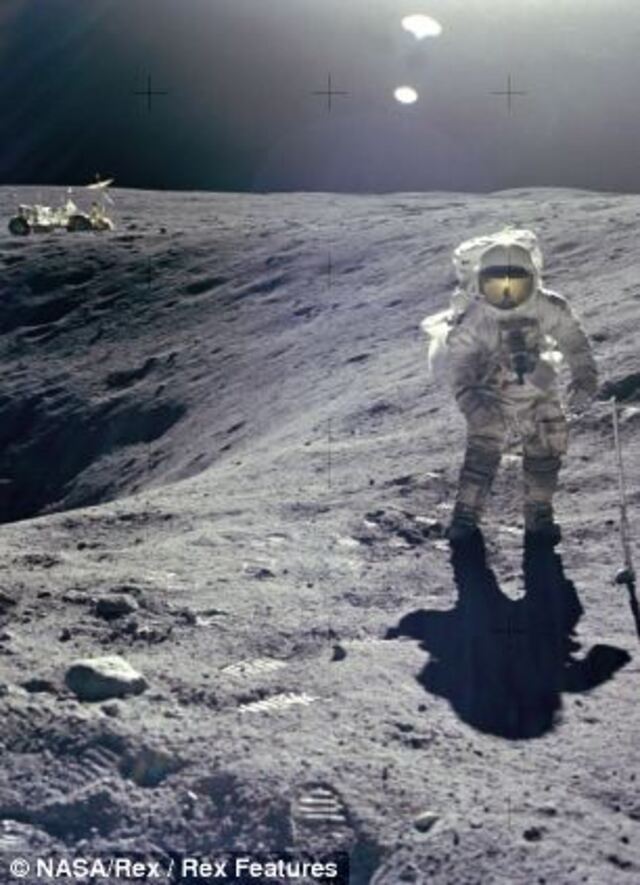
Duke’s moonwalk lasted just under three days, during which he and Young conducted three extra-vehicular activities (EVAs), totaling over 20 hours of work on the lunar surface. They gathered 95.8 kilograms of lunar rock and soil samples, contributing valuable data to lunar science. But for Duke, the lunar exploration was about more than science—it was about leaving a lasting mark on the Moon for himself, his family, and humanity.
The Family Photo: A Symbolic Gesture
The family photo that Duke left on the Moon was a symbol of love, pride, and a connection to Earth that transcended space. The photo shows Duke sitting with his wife, Dorothy, and their two sons, Charles Duke III and Thomas Duke, on a bench. Duke’s decision to leave this photo was not just about creating a physical record; it was an emotional act that connected his family to the epic achievement of walking on the Moon.

In an interview years later, Duke explained, “I’d always planned to leave it on the Moon.” This was his way of bringing a piece of home to the most distant place known to humanity. The image, left on the lunar surface for more than 50 years, remains as a testament to the personal sacrifices astronauts like Duke made in the name of exploration.
The photo, with its retro ‘70s family vibe, also serves as a time capsule, encapsulating a moment in history when space exploration was at its height, and the world was captivated by the achievements of astronauts. The photo remains a symbol of the intimate human stories behind every space mission.
Duke’s Other Contributions: Leaving a Medal Behind
In addition to the family portrait, Duke also left behind a commemorative medal issued by the United States Air Force. This medal, created to celebrate the Air Force’s 25th anniversary in 1972, was another meaningful gesture that Duke made to honor his roots in the military and his contribution to the mission. The medal remains on the Moon alongside the family photo, representing a lasting tribute to the work of the United States Air Force and its astronauts.
The combination of the photo and the medal creates a rich historical narrative—a family’s tribute to an era of human achievement, set against the backdrop of the Cold War and the space race.
Unearthing the Image: Discovery of the Family Portrait
For years, the family photo remained buried in the dust of the Moon’s surface. But thanks to the Project Apollo Image Archive, which serves as an online repository for all the images taken during the Apollo missions, the photo was rediscovered. The archive offers a treasure trove of digital images that capture the stunning moments and stories of space exploration. Duke’s family photo is now part of the public record, allowing people around the world to experience this touching piece of space history.
The family photo’s discovery has added a new layer of emotional depth to the Apollo 16 mission. What was once a personal gesture has now become a symbol of human connection, perseverance, and the familial ties that keep astronauts grounded during their missions.
Life After Apollo 16: Charles Duke’s Legacy

After his historic Moonwalk, Charles Duke continued his life as a dedicated astronaut and a man of faith. Upon returning to Earth, he became active in various fields, including public speaking and ministry work. He remained a strong advocate for space exploration, and his experiences on the Moon helped shape his views on life and humanity.
Today, Duke resides in a town outside San Antonio, Texas, with his wife Dorothy. He remains an inspiring figure, both for his achievements in space and for his role as a Christian lay witness involved in prison ministry. Despite his fame, Duke’s humble demeanor and unwavering dedication to his family and faith continue to define his legacy.
Video
Watch the video Astronaut Charlie Duke’s Story of Faith to hear about his inspiring journey and the role faith played in his life and career.
Conclusion: A Family’s Touch on the Moon
The family portrait left behind by Charles Duke is more than just a photo; it is a reminder of the human side of space exploration. It is a personal token of love, pride, and connection, set against the backdrop of one of humanity’s greatest achievements. The Moon, with its barren and desolate landscape, now holds a small, enduring piece of Earth—a family’s love preserved for eternity.
As Duke’s footprints still remain on the Moon, so too does the legacy of his gesture, a testament to the importance of family and the enduring human spirit that drives us to reach for the stars.

